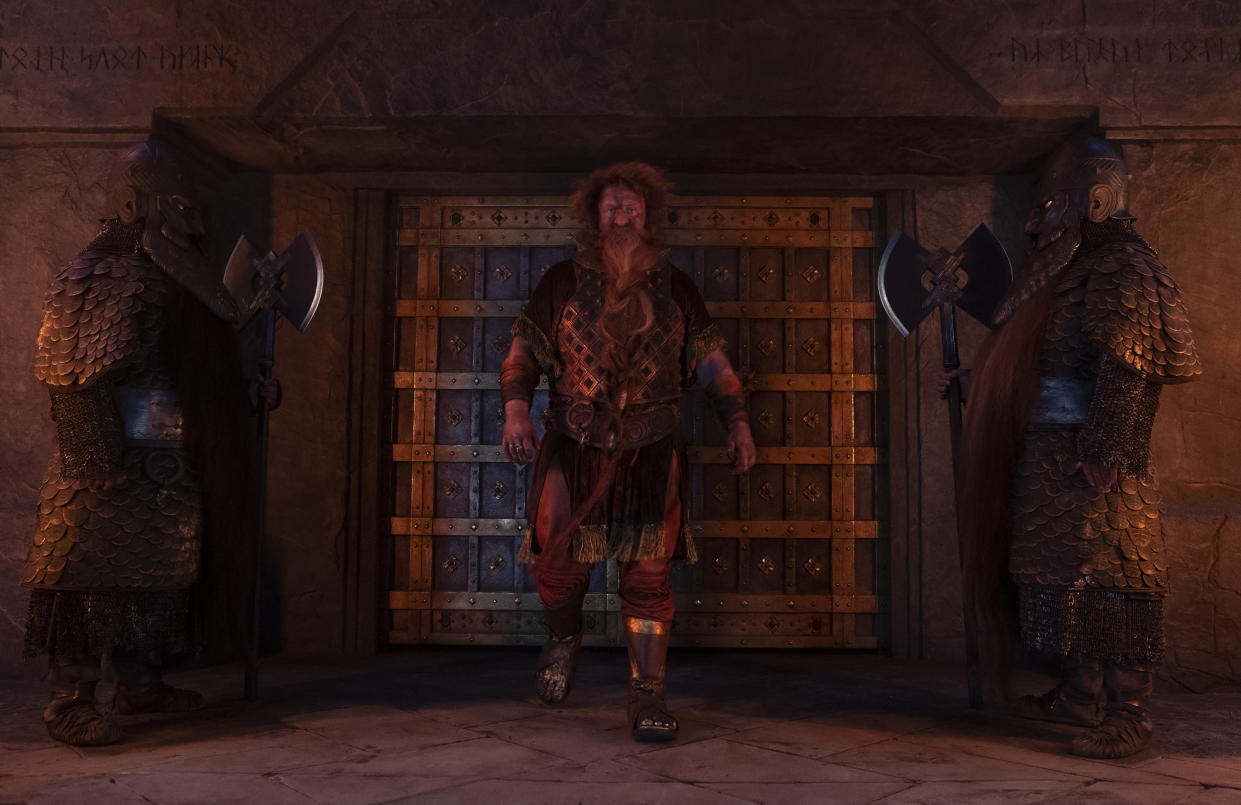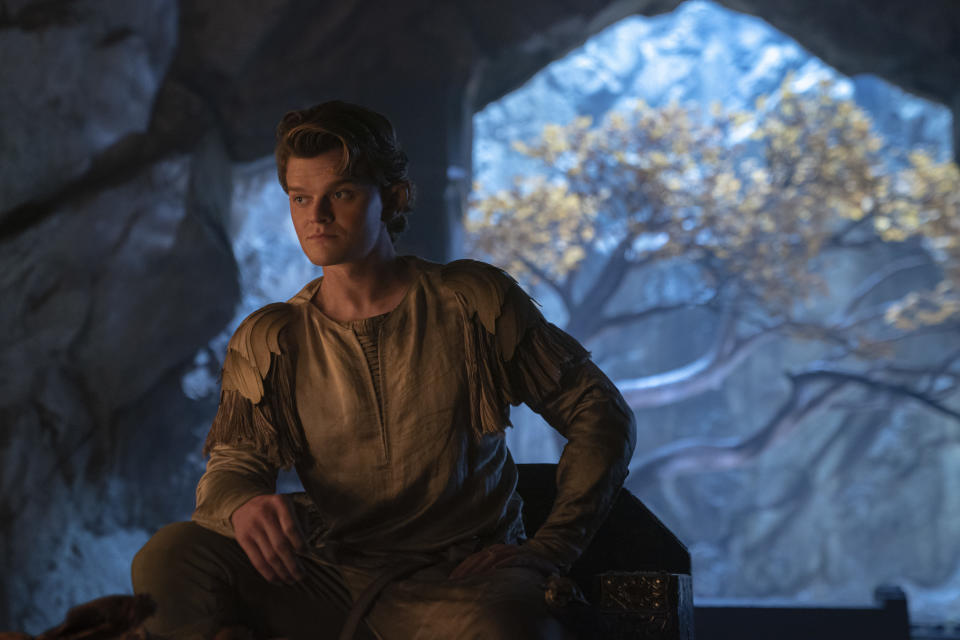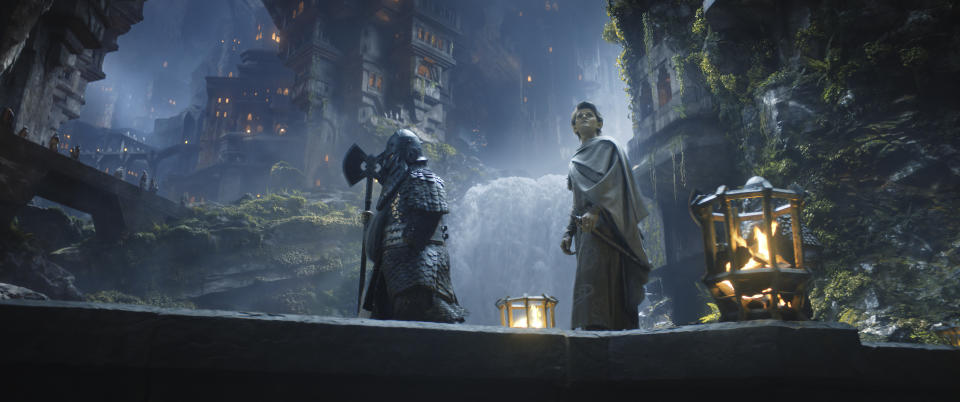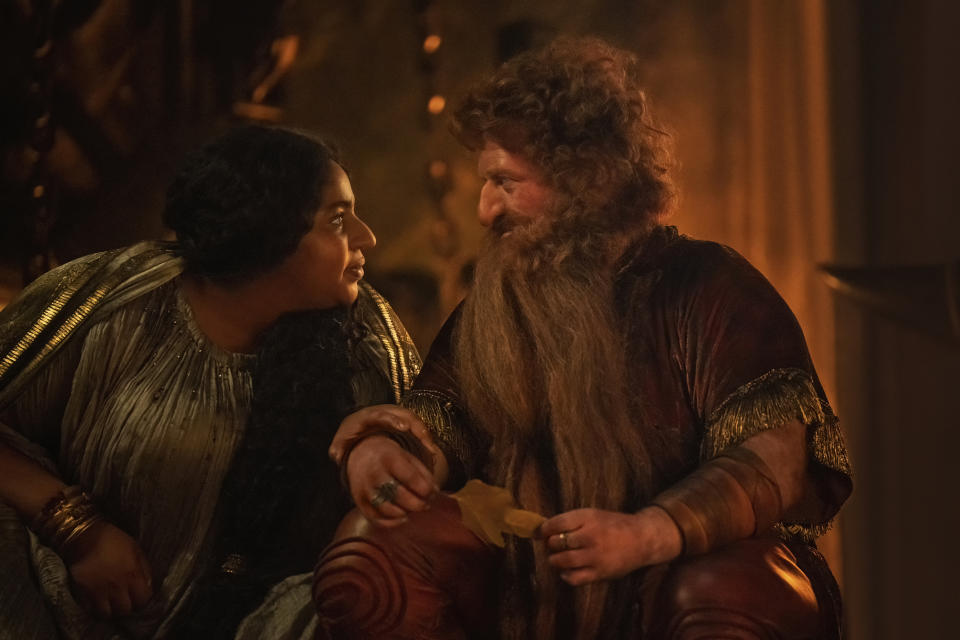‘The Lord of the Rings: The Rings of Power’: Turning the Mines of Moria Into the Halls of Khazad-dûm

- Oops!Something went wrong.Please try again later.
- Oops!Something went wrong.Please try again later.
- Oops!Something went wrong.Please try again later.
It’s hard to imagine now that there are several movies and a TV show based on J.R.R. Tolkien’s “The Lord of the Rings” trilogy, but at one point there were very different, competing visions of what Middle Earth looks like. “The Lord of the Rings: The Rings of Power” production designer Ramsey Avery first fell in love with Tolkien illustrations by the Brothers Hildebrandt in the ’70s and has watched artistic interpretations of the author’s legendarium evolve over the decades, to the point where the work of Alan Lee and John Howe was so central to Peter Jackson’s vision for his “Lord of the Rings” films, they were both hired as concept artists for the series.
Avery’s particular challenge on “The Rings of Power” was to build environments that are both familiar and unfamiliar — some unevolved versions and some much more evolved versions of the cultures that feature in Jackson’s trilogy. But one place that presented Avery with both the largest canvas to try new things and the strictest sense of what already exists is the one place we’ve all already seen before: the dwarf city of Khazad-dûm, which will one day become the Mines of Moria.
More from IndieWire
'Lord of the Rings: The Rings of Power' Foreshadows Future Reveals in Episode 3
'Lord of the Rings' Alums Elijah Wood, Sean Astin Support 'Rings of Power' Amid Racist Backlash
Moria, when we see it in “Lord of the Rings: The Fellowship of the Ring,” is a ruin of cobwebs and corpses, rocky tracks through carved lintels that feel more like the architecture of a dungeon than a city, complete with ominously dripping pools of water and jagged, uneven crevasses. There’s plenty of places for orcs, or an ex-ringbearer, to hide. When the fellowship comes to the city’s great hall, full of towering columns that seem to stretch upward to the top of the mountain above, we get a sense of the literal heights the now destroyed civilization attained; Howard Shore’s score, full of rolling drums and proud horns, only adds to the haunting monumentality of it. Avery’s somewhat contradictory job was to both recapture the life of a vibrant city and dial back what we see in “Fellowship,” creating a Khazad-dûm for a more innocent time.
“With the dwarves, literally the quote [from the books and the movie] is they ‘dug too greedily and too deep,’ right?,” Avery told IndieWire. “That’s what brought about their downfall. So what does that visually represent, that sense of greedily and deeply? When you look at the architecture [in ‘The Fellowship of the Ring’], it’s really monumental. Those volumes are huge and the shapes are massive and there’s figurative work that’s humongous.
“But when you go back into what Tolkien talked about the dwarves being, that they are of stone and of flint, and there’s that great speech, I think, in ‘The Two Towers’ that Gimli gives about the Glittering Caves, where he talks about how [dwarves treat stone] with such reverence and such care that sometimes they’ll only do a chip or two a day in terms of forming it. And I thought, well, that’s really the difference between second age and third age.”

Ben Rothstein/Prime Video
Tolkien divides the history of his imagined world of Middle Earth into epochs that last thousands of years and usually end with the bang of a Dark Lord or two being vanquished (but not forever). The films and the novels take place at the end of the Third Age, and the show at the end of the Second. The dwarf city of this time is one that hasn’t yet broken the seal and unleashed the monsters that will cause their demise (although they’ve found something and put it in a box). It is impressive, but doesn’t have the incredibly ordered, colossal architecture we glimpse through Gandalf’s staff. So Avery attempted to build spaces that felt much more geometrically flexible, moving with the stone instead of against it.
“A lot of [Howe and Lee’s] stuff was also very big and geometric and monumental, but I could find these series of illustrations, their sketches, where [dwarf architecture] had this sense of being really worked into the rock, or there’d be a column that came out and then turned into rock as it went up into the mountain,” Avery said. “And so those are the types of form languages that I wanted to then be careful to express in how we treated Khazad-dûm. There should be this respect for the mountain and the shapes of the mountain and you should see the stonework in the mountain, as opposed to hacking [stonework] into big things.”
Instead of upward, the architecture of Khazad-dûm on the series in a lot of respects goes outward in order to reflect the dwarves’ sensibilities and aesthetics. “We wanted to make sure that the sets had this sense of stoutness,” Avery said. “Their costumes are made to make them feel bigger and their hair is big and all that stuff. You get this sense of trying to give them the stoutness. And so the sets needed to echo that, too. So all of our columns are really big or they have these really big capitals on them or the braziers are really big, so you can get a lot of flame up and out of them.”

Courtesy of Prime Video
Even the chairs in Durin’s (Owain Arthur) house, which we visit when Elrond (Robert Aramayo) is (not) invited back for dinner, echoes the relationship between the dwarves and their mountain home in miniature. When Durin and Disa (Sophia Nomvete) sit, they’re a little bit diminished by the high backs that go on for at least another foot above their heads — but they’re perfectly at home. Avery said he built the chair backs and the table in their house a little bit high, both so that it makes the people look a little bit smaller, and because it expresses a particularly dwarven sense of being most comfortable while surrounded by a solid world both above and below. In the mythic beginning of Middle Earth, dwarves were made to slumber inside the earth before they could awake (long story), and in “The Rings of Power,” the city of Khazad-dûm combines strong, sharp, angular lines of the dwarf-made architecture with a natural curvature that comfortably surrounds them — the embrace of the mountain.
“All those visual cues to just make it feel that people a little smaller and then, as opposed to doing what, like Peter Jackson did, either having to build the set in two scales — which there was no way we could afford to do that — or having the actors have to play everything in green screen,” Avery said. “We worked really carefully with visual effects and the directors would decide which key moments they needed to make sure that had those elements where you put the two cultures in different sizes in the same shot.”
Some of the memorable design touches in the show’s version of Khazad-dûm came out of practical necessity, as well. “Those big crystal lanterns in Durin’s house came from the idea that the DP desperately needed something where he could just throw a softer light within the space, rather than just having this flicker of flame light,” Avery said. “So how do you direct the flame down? How could we make a giant oil lantern and what would that look like? That challenge gave [us the crystal chandelier, which gave us] something to bang Elrond’s head into as well.”

Matt Grace/Prime Video
In the process of accommodating the visual inspirations from the film trilogy and the demands of shooting at different scales, Avery was guided by a sense — fittingly for Tolkien — of history. “One of the key things we tried to look for is what are the geometries of each of the cultures and how do you define that?” he said. “In the Second Age, you should feel the mountain. There should be this respect for the mountain and the shapes of the mountain. I went through a lot of John Howe and Alan Lee illustrations and went, ‘Where did they do that?’ There’s definitely a sense of mythological shaping and color and a sense of creating a mythology in all of that illustration.”
The trick was keeping the stages of the mythology straight. Ramsey’s team included artisans who either started their careers with the original film trilogy or the ‘Hobbit’ movies. “Our calligrapher, Daniel Reeve, did a bunch of work in the movies. And Jules Cook, our supervising art director, was the art director on Minas Tirith, so there were definitely people that had that history. One thing that was very funny about that is I had to kind of say, ‘This is not the Third Age.’ Don’t do what you did in the movies, because that’s not what we’re doing. You can’t follow that form language or that ornament. We have to dial it back and do what’s Second Age.”
Best of IndieWire
From 'Reality Bites' to 'Fatal Attraction,' Keep Track of All the Upcoming Film-to-TV Adaptations
7 New Netflix Shows in September 2022 — and the Best Reasons to Watch
Sign up for Indiewire's Newsletter. For the latest news, follow us on Facebook, Twitter, and Instagram.

